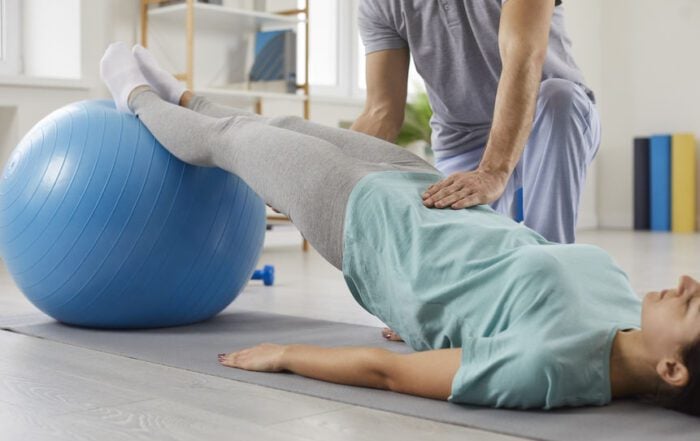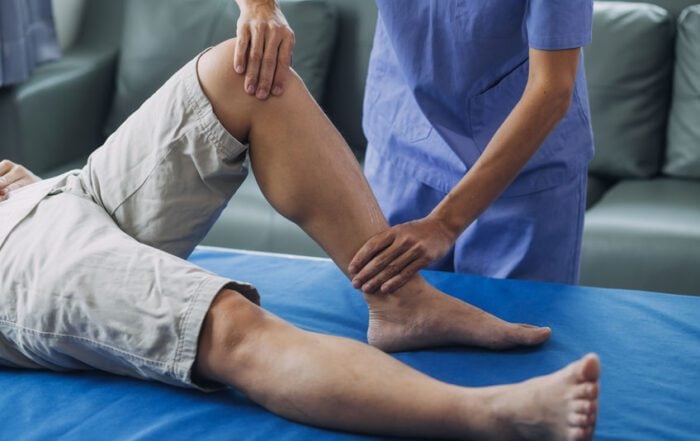Lifting Again After Bicep Tenodesis
If a bicep tear occurs, surgery may be required to repair the damage. Bicep tenodesis is a surgical technique used to reattach the biceps tendon to the shoulder bone. The process involves making a small incision in the shoulder and removing the damaged or torn section of the tendon. The remaining tendon is then reconnected to the bone in the shoulder using sutures or small anchors. The procedure can restore function and reduce pain but requires some recovery time. During that time, patients are concerned about certain restrictions, like lifting.

Surgical recovery time
After bicep tenodesis surgery, recovery time can vary depending on several factors, including the patient's age, health, current fitness level, and injury severity. Most patients can expect to be in a sling for 4-6 weeks following the procedure. During this time, the doctor will instruct the patient to avoid using the arm for any heavy lifting or strenuous activity. During the post-op period, patients may also be advised to avoid driving or operating heavy machinery.
Lifting limits
An orthopedic surgeon will likely set a lifting restriction after bicep tenodesis. This is because the healing process following the procedure is critical, and any strain or stress on the tendon can slow the recovery process or even lead to re-injury. The limit may be as little as a 10lbs to reduce the chances of re-injury. However, lifting restrictions can vary depending on several factors, including the severity of the injury and the type of surgery performed. Lifting restrictions are typically in place the first few weeks after surgery. As a patient heals, more weight can be added.
Speeding up healing
Several things can be done to accelerate the recovery process after bicep tenodesis surgery. Following the surgeon's post-operative instructions closely is crucial, including refraining from any heavy lifting or strenuous activity during the lifting restriction period. Keeping the arm and shoulder as still as possible during recovery promotes proper healing. Physical therapy (PT) may be recommended after surgery to strengthen the shoulder and prevent future injuries. The physical therapist will create a customized exercise program that includes exercises to enhance range of motion (ROM), strength, and functional training. Consistent PT attendance can aid in a patient’s return to regular activities.
Set down the weights for now
After the surgery, follow the orthopedic surgeon's lifting restriction guidelines to promote proper healing and avoid re-injury. Recovery time may vary based on various factors, but most patients can anticipate being on lifting restriction for 4-6 weeks post-procedure. Physical therapy may also be suggested to strengthen the arm during the recovery process. After a temporary pause, patients can work back up to lifting weights again with an even better, stronger arm.
Recent Posts
What To Do About Hip Pain: Is It Time To See An Orthopedic Surgeon About Labral Repair?
Hip pain should not be overlooked, as the issue could be a labral tear. Symptoms like pain and instability require an orthopedic surgeon’s assessment.
ACL Repair: Will You Have Range Of Motion With Your Knee After Recovery & Physical Therapy?
After an ACL injury, ROM can be negatively affected. ACL repair surgery helps restore function, but physical therapy is essential to ROM.
Arthroscopy: What Are The Benefits Of This Minimally Invasive Outpatient Orthopedic Procedure?
Arthroscopy can help diagnose or treat joint conditions. Benefits of the MIS include faster recovery, less pain, and fewer scars.
Posterior Interbody Lumbar Fusion: What Are The Benefits Of PLIF For People With Back Pain?
People with chronic back pain may benefit from posterior interbody lumbar fusion surgery. PLIF can reduce pain and improve stability.








